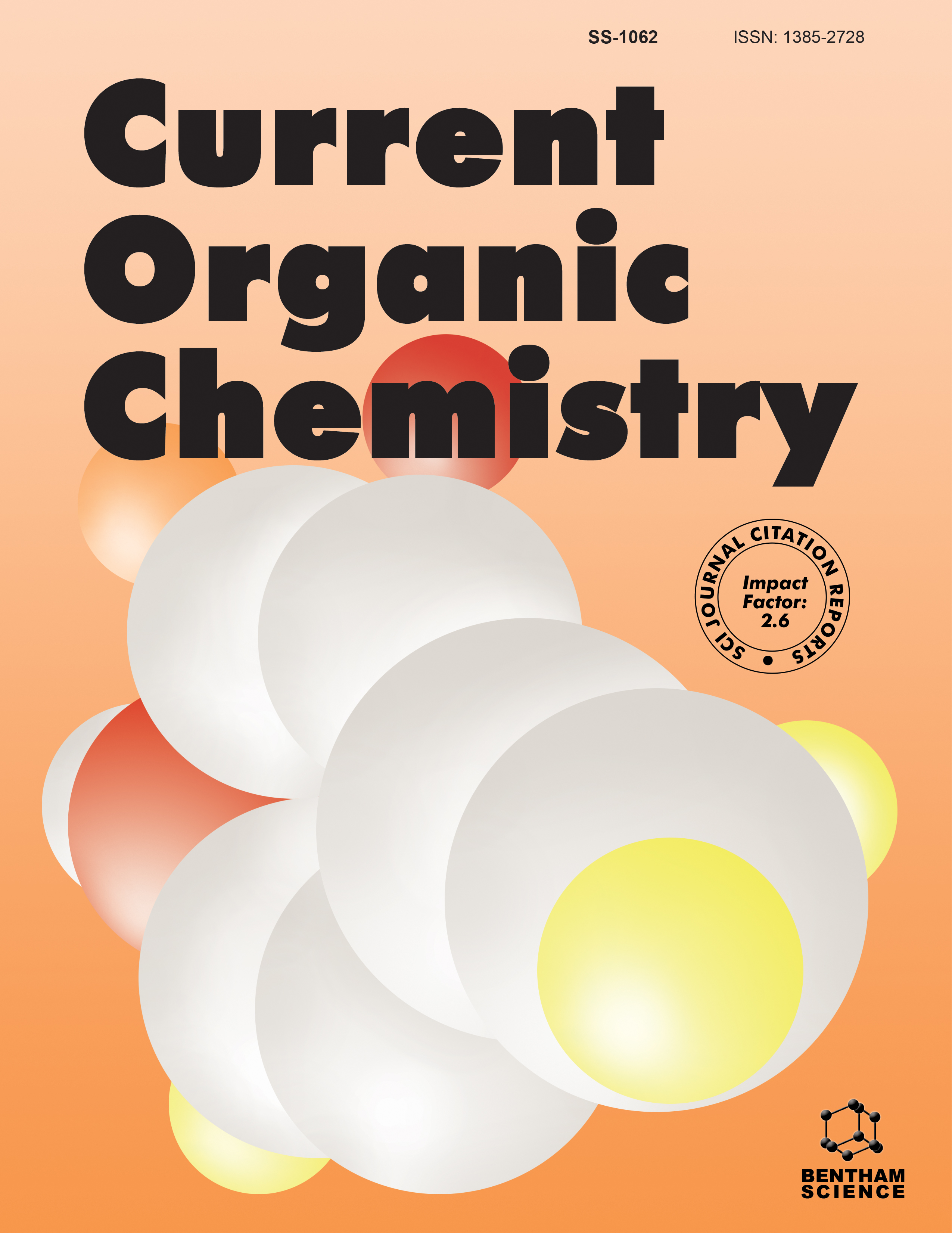- Home
- A-Z Publications
- Current Organic Chemistry
- Previous Issues
- Volume 27, Issue 19, 2023
Current Organic Chemistry - Volume 27, Issue 19, 2023
Volume 27, Issue 19, 2023
-
-
Recent Developments in the Transformation of 3-amino-2-azetidinones
More LessAuthors: Priyanka Sharma, Rashmi Sharma, Vipan Kumar, Parvesh Singh and Gaurav BhargavaFunctionalized 3-amino-2-azetidinones are important heterocyclic systems which can easily be transformed into functionally decorated heterocycles using β-lactam synthon protocol. The different synthetic methods have been explored for the transformation of functionalized 3-amino-2-azetidiones to various heterocyclic molecules, such as imidazolidin-2-ones, piperazines, hydantoins, 4-oxo-1H-pyrroles, 1,4-ben Read More
-
-
-
State-of-art of Liquid Hydrogen Carriers: Trends in the Selection of Organic Molecules
More LessAuthors: Sergey A. Stepanenko, Anton P. Koskin, Roman G. Kukushkin and Petr M. YeletskyNowadays, fossil fuels represent the main energy source. According to the BP Statistical Review of World Energy report, in 2021, global energy consumption amounted to 595.15 EJ of which 82% was generated from natural gas, oil and coal. The energy consumption growth, rapid depletion of fossil fuels and increasing pressure on the environment threaten the continued sustainability of the global energy system. In this cont Read More
-
-
-
Synthetic Routes and Pharmacological Activities of Purine Derivatives: A Review
More LessThe Purine moiety is regarded as the ubiquitous nitrogen-containing heterocycle in nature and is recognized as a privileged scaffold in medicinal chemistry. Moreover, the purine derivatives are heterocyclic aromatic compounds consisting of conjoined pyrimidine and imidazole moieties. Purine derivatives are involved in various metabolic processes as cofactors associated with a wide variety of enzymes and receptors. Therefore Read More
-
-
-
Bioisosteric Replacement through 1,2,3-triazolyl Linkage Significantly Potentiate Biological Activity in Lidocaine and Etidocaine Analogs: Rational Design and Local Anesthetic Activity
More LessAuthors: Adarsh Sahu and Ram Kishore AgrawalCytochrome P450 3A4, the most abundant form of isoenzyme, in combination with several other isoforms, metabolizes lignocaine into mono-ethylglycine xylidide (MEGX) and glycylxylidide (GX), through N-dealkylation, ring hydroxylation, amide cleavage, and conjugation process which contribute the toxic effects. Inspiring by the rationality, functional approaches, and predictable facts lay by the emerging research group Read More
-
-
-
5-Aminolevulinic Acid Tautomers: Theoretical Elucidation of pKa’s, Species Distribution and Dimerization Constants
More Less5-aminolevulinic acid (5-ALA) applications in medicine and agriculture face the challenge of stability. In aqueous solutions, concentration, pH, and temperature have an effect on the loss of activity. Computational chemistry helps to determine tautomerization, formation of derivatives and the stability, in different conditions, in a short time and reducing the cost of analysis. This work aimed to model the 5-ALA molecule and its t Read More
-
-
-
Regioselectivity Inversion in Hydroformylation of Aryl Alkenes with a Diphosphoramidite-rhodium Catalyst
More LessRhodium catalysts for hydroformylation of aryl alkenes generally promote the formation of branched aldehydes. Here, we have demonstrated that by using a single rhodium catalyst containing a diphosphoramidite ligand derived from BINOL, it is possible to achieve the inversion of regioselectivity in the hydroformylation of aryl alkenes simply by reducing the syngas pressure or, alternatively, increasing the reaction t Read More
-
-
-
Design, Synthesis, Reactions, Molecular Docking, Antitumor Activities of Novel Naphthopyran, Naphthopyranopyrimidines, and Naphthoyranotriazolopyrimidine Derivatives
More LessIn ethanolic piperidine solution, the interaction of 6-bromonaphthalen-2-ol (1) with α- cyano-p-chlorocinnamonitrile (2a) or ethyl α-cyano-p-chlorocinnamate (2b) yielded 4Hnaphtho[ 2,1-b]pyran-3-carbonitrile (3a) and 4H-naphtho[2,1-b]pyran-3-carboxylate (3b). The naphthopyran derivatives (3a, b) reacted with electrophilic reagents afforded naphthopyranopyrimidines and naphthopyrano-triazolopyrimidine derivat Read More
-
-
-
Oxidation of Polycyclic Aromatic Hydrocarbons with Mono-Oxygen Donors Catalysed by Triaryl-Manganese(III) Corroles
More LessAuthors: Anshu Dandia, Shive M.S. Chauhan and Marilyn D. MiltonThe oxidation of polycyclic aromatic hydrocarbons (PAH) with mono-oxygen donors such as iodosylbenzene, hydrogen peroxide and tert-butyl hydroperoxide in the presence of selected 5,10,15-triarylmanganese( III) corroles as catalysts were examined under different reaction conditions. The effect of reaction conditions on triaryl-manganese(III) corroles catalysts and oxidants is discussed. It was observed that in a solvent Read More
-
Volumes & issues
-
Volume 29 (2025)
-
Volume 28 (2024)
-
Volume 27 (2023)
-
Volume 26 (2022)
-
Volume 25 (2021)
-
Volume 24 (2020)
-
Volume 23 (2019)
-
Volume 22 (2018)
-
Volume 21 (2017)
-
Volume 20 (2016)
-
Volume 19 (2015)
-
Volume 18 (2014)
-
Volume 17 (2013)
-
Volume 16 (2012)
-
Volume 15 (2011)
-
Volume 14 (2010)
-
Volume 13 (2009)
-
Volume 12 (2008)
-
Volume 11 (2007)
-
Volume 10 (2006)
-
Volume 9 (2005)
-
Volume 8 (2004)
-
Volume 7 (2003)
-
Volume 6 (2002)
-
Volume 5 (2001)
-
Volume 4 (2000)
Most Read This Month
Article
content/journals/coc
Journal
10
5
false
en


